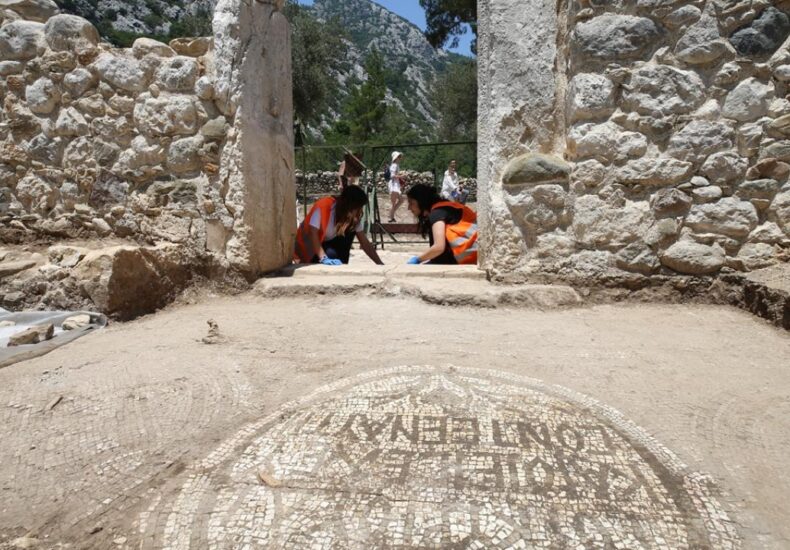
A mosaic inscribed with “Only those on the right path may enter” has been unearthed at the entrance of a church in the ancient city of Olympos
A new mosaic inscription has been uncovered at the entrance of a Byzantine-era church in the ancient city of Olympos, located in the Kumluca district of Antalya, Türkiye. The inscription reads: “Only those on the right path may enter,” offering a striking glimpse into the spiritual symbolism of the site.
Excavations at the ancient city of Olympos—rich with Hellenistic, Roman, and Byzantine heritage—have been ongoing since 2006, with uninterrupted, year-round digs over the past four years, supported by the Turkish Ministry of Culture and Tourism.
Pamukkale University Faculty Member and head of the excavation team Assoc. Prof. Dr. Gökçen Kurtuluş Öztaşkın told Anadolu Agency (AA) that the 2024 excavation season revealed both decorative and textual mosaics on the floors of the church known as “Structure No. 1.”
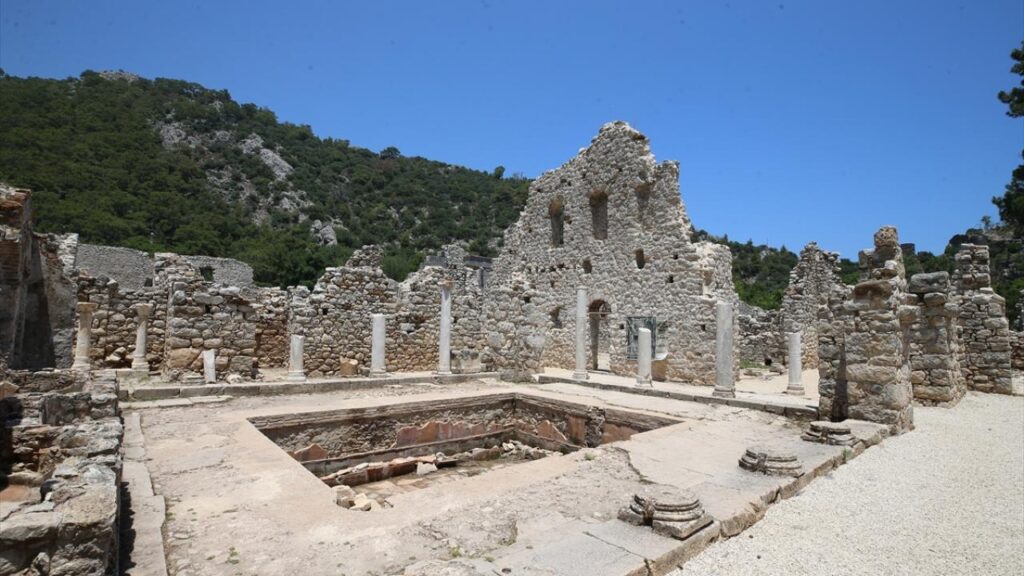
“Olympos continues to surprise us,” said Öztaşkın. “We discovered beautifully decorated mosaic floors in both the main hall and annex of the church. Most notably, a mosaic inscription was found directly in front of the entrance, with the phrase: ‘Only those on the right path may enter.’”
Names of the Church’s Patrons Also Discovered
The team also uncovered mosaics bearing the names of the church’s patrons. These findings not only enhance understanding of the region’s religious practices but also highlight Olympos as a city rich in mosaic art compared to other Lycian settlements.
📣 Our WhatsApp channel is now LIVE! Stay up-to-date with the latest news and updates, just click here to follow us on WhatsApp and never miss a thing!!
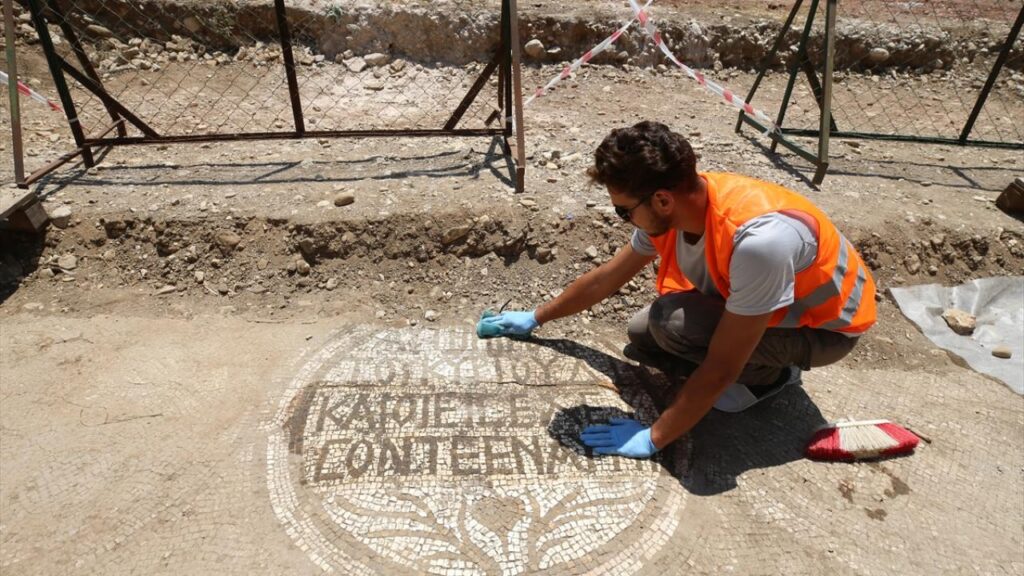
Possible Temple Structure Under Investigation
In addition to the religious structures, the excavation team is investigating what may be a Roman-era temple. The site, which later evolved into a civilian settlement during the Byzantine period due to population growth, contains evidence of a multi-room residential structure with stone-paved floors.
Öztaşkın noted that the structure was built in the 5th century AD, destroyed by fire in the 6th century, and later reconstructed on the same foundation. She added:
“At the end of last season, we identified ashlar masonry walls that suggest the presence of a monumental temple. Based on its layout and construction technique, this area will be a major focus of our 2025 excavation program.”
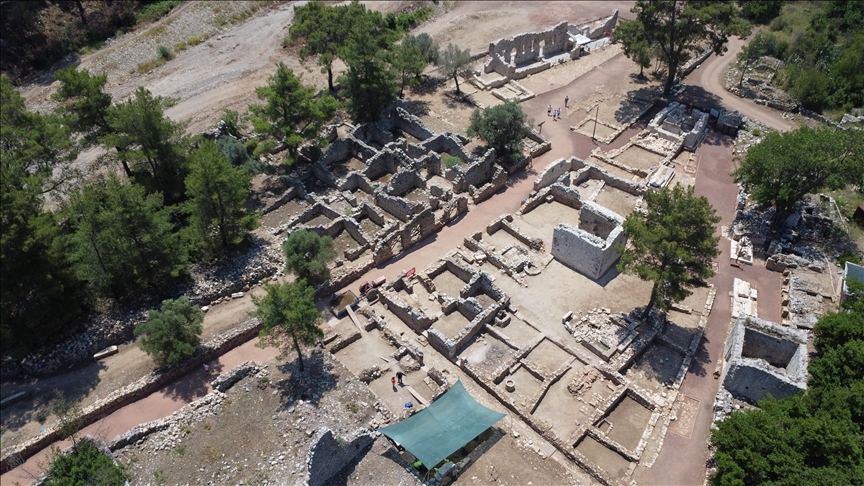
Excavations Expand Across the Ancient City
For the remainder of 2024, the excavation team will continue work on key sites including the necropolis in the western section of the city, the central temple, the Bishop’s Palace, and Church No. 3. Once ongoing work in the north is completed over the next two years, the focus will shift to the southern zones.
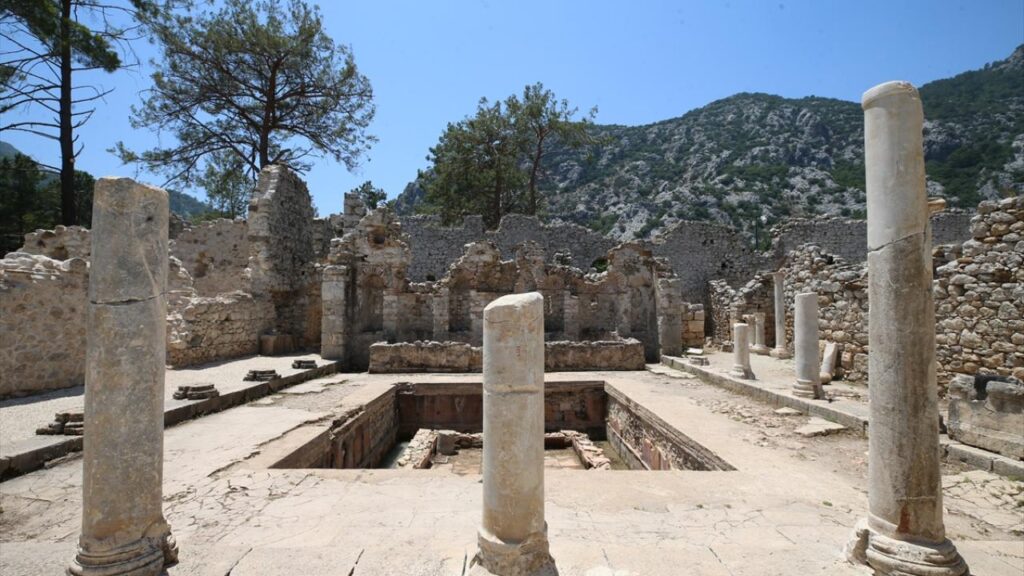
Among the latest discoveries is a large pithos (storage jar), found in a residential area. All newly uncovered artifacts are being preserved and exhibited at the Antalya Archaeological Museum.
Cover Image Credit: Mosaic reading “Only those on the right path may enter” found at church entrance in Olympos Ancient City, Antalya. Kasım Sakallı/AA
You may also like
- A 1700-year-old statue of Pan unearthed during the excavations at Polyeuktos in İstanbul
- The granary was found in the ancient city of Sebaste, founded by the first Roman emperor Augustus
- Donalar Kale Kapı Rock Tomb or Donalar Rock Tomb
- Theater emerges as works continue in ancient city of Perinthos
- Urartian King Argishti’s bronze shield revealed the name of an unknown country
- The religious center of Lycia, the ancient city of Letoon
- Who were the Luwians?
- A new study brings a fresh perspective on the Anatolian origin of the Indo-European languages
- Perhaps the oldest thermal treatment center in the world, which has been in continuous use for 2000 years -Basilica Therma Roman Bath or King’s Daughter-
- The largest synagogue of the ancient world, located in the ancient city of Sardis, is being restored

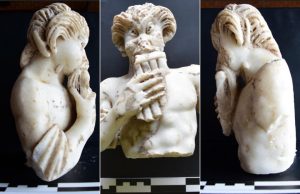
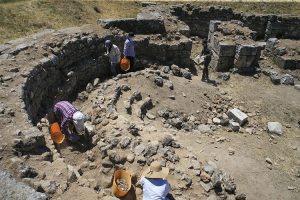
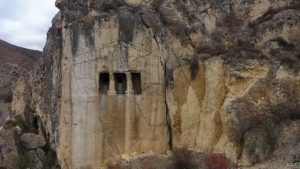
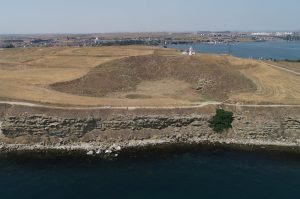
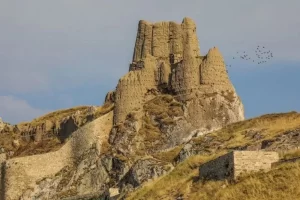
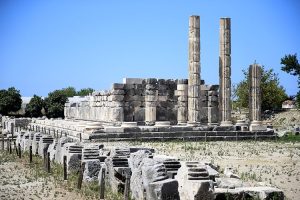


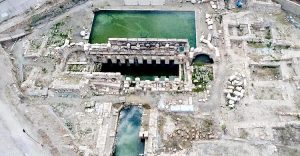
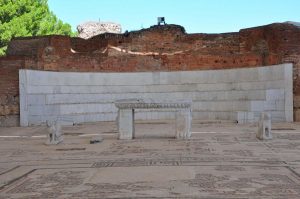
Leave a Reply